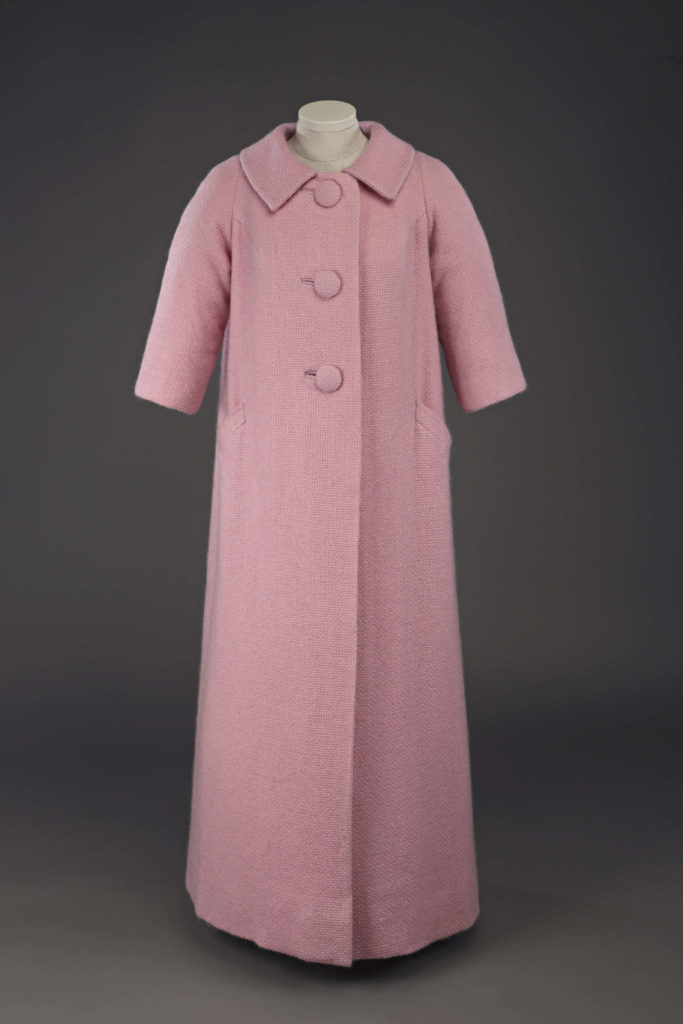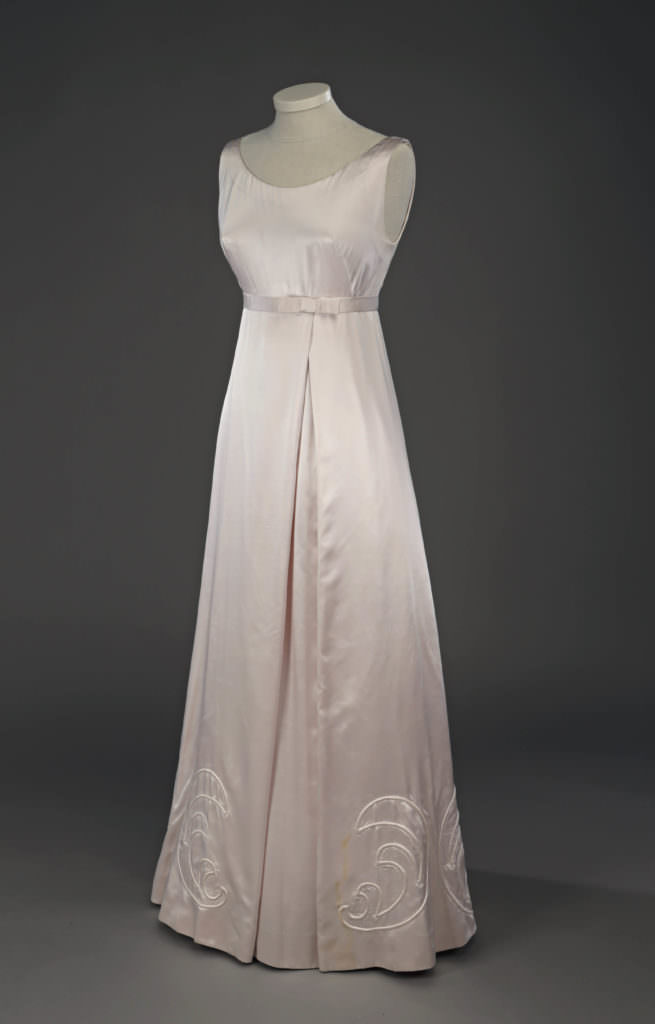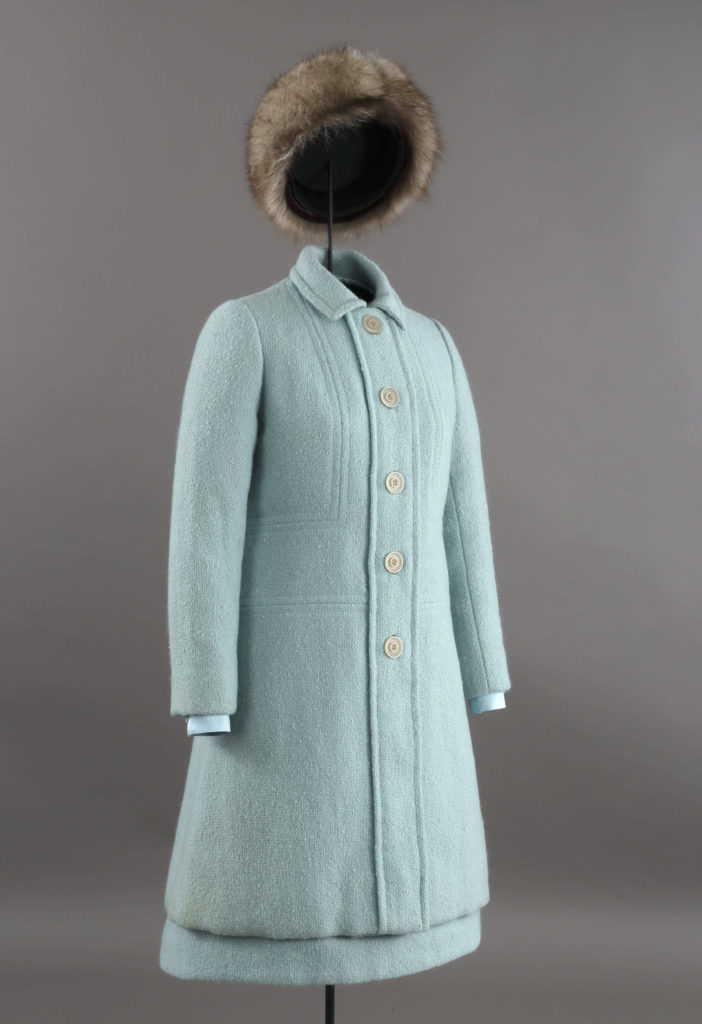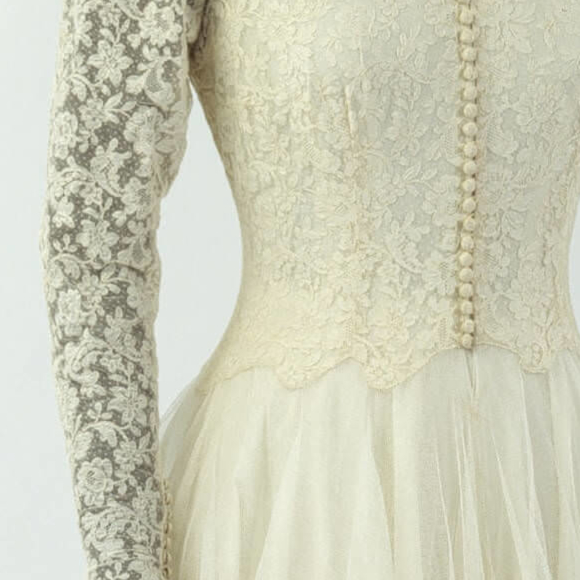
Wedding dress (detail), Raoul-Jean Fouré, 1939. Gift of Jean Saint-Cyr, M993.80.1.1-3 © McCord Museum
Born in Brittany, Raoul-Jean Fouré left his hometown for Paris in the early 1920s. He began by designing shoes for performers Sacha Guitry, Mistinguett and the Dolly Sisters and then worked in the fashion house of France Vramant. He rubbed shoulders with couturiers and attended lavish parties given by couturier Paul Poiret. In 1927, he moved to Montreal and opened his first couture salon on University Street, near Sherbrooke Street.
Trained in the Parisian way, he designed and cut all his garments himself, using the draping technique.
With his mastery of all the skills of the trade and his ability to working with both silks and woollens, he was able to work to the highest standards.
He soon began offering a very innovative service, outfitting entire bridal parties. He would create not just the bride’s wedding gown, but also her going-away outfit, dresses for the bridesmaids and matrons of honour, and clothing for the mother of the bride. Beautifully made in luxurious fabrics, these ensembles made his reputation.
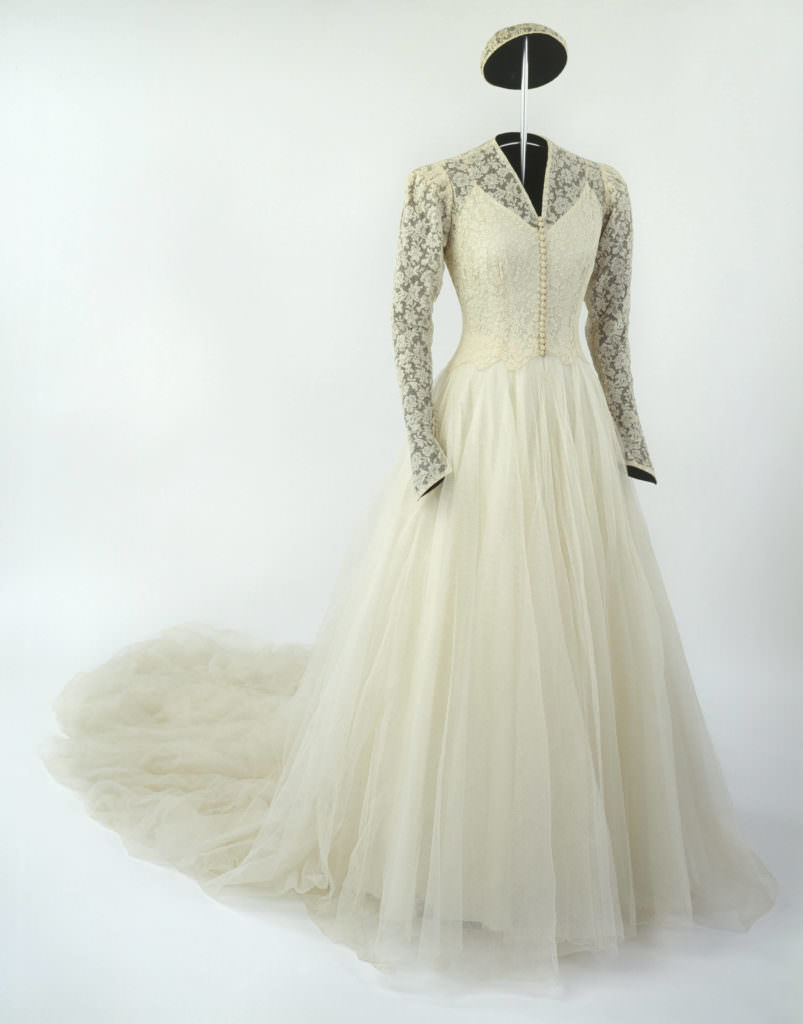
Ensemble, Raoul-Jean Fouré, 1939. Gift of Jean Saint-Cyr, M993.80.1.1-3 © McCord Museum
However, the couturier wanted to broaden his expertise and create clothing for other occasions. Since advertising media in the early 1930s were limited and not very accessible, he had to rely on his own resources. He created clothing for his wife, Marguerite Mount (1903–1954), who wore only his creations. As his inspiring muse and ambassador of his label, she was his best model and leading representative. Clients flocked to Raoul-Jean Fouré, his business expanded, and he soon provided work for 25 seamstresses.
In 1937, he moved his salon to Crescent Street where he remained at the top of his field for the next 20 years.
In addition to dressing his many clients, he created costumes for Montreal theatres, from the Comédie Française to the Théâtre Saint-Denis.
He took part in many events; for fashion designers, the most important of these was unquestionably the Ligue de la Jeunesse Féminine annual fashion show. This very well-attended group show was an excellent means of promotion.
Just as Christian Dior was launching the New Look in 1947, Raoul-Jean Fouré presented his first collection in his salon, asking clients to model the clothing. Though he presented an extravagant, expensive collection, the event did not have the hoped-for success. However, the couturier was not the type of person to give up without exploring all the options. The following seasons, he presented themed collections, which were no more successful. His clientele did not like the idea that a given model could be reproduced and bought by other people. Clients demanded exclusivity in fabric and model, and the couturier had to comply with demand.
In the 1950s, Raoul-Jean Fouré embarked on an ambitious venture to promote Canadian fashion and achieve recognition for its designers. As a representative of Canada, he took part in a fashion event in Atlantic City alongside Dior, Balenciaga, Patou and Givenchy. He not only partnered with other fashion designers, he also worked with textile manufacturers to publicize and acknowledge what was being done in Canada.
He became the first president of the Association of Canadian Couturiers in 1954, a position the he held a second time during the last few years of this organization, which eventually folded in 1968.
In 1955, he began a seven-year partnership with Jacques de Montjoye. With his talent for sketching and training at the École de la Chambre Syndicale de la Couture Parisienne, de Montjoye brought the business his complementary technical expertise.
Always on the lookout for opportunities to promote his work, Fouré combined the presentation of his sumptuous evening gowns with the launch of new cars in the Auto-élégance fashion shows. Another innovation was his association with a fur manufacturer in 1960. The resulting creations, a blend of knit fabric and fur, were very avant-garde for the time.
Fouré retired to San Diego in 1969 and returned to live in Montreal a few years before his death. His highly prestigious career paved the way for several generations of designers.
Sources
Dumont, Monique. “Raoul-Jean Fouré, le premier couturier du Québec”, Elle Québec, no 21, 1991, p. 50-54.
Publication date
01/10/2004
Writing
Françoise Dulac, Dicomode
Share
DownloadRecommended entries
© MCCORD STEWART MUSEUM 2025




